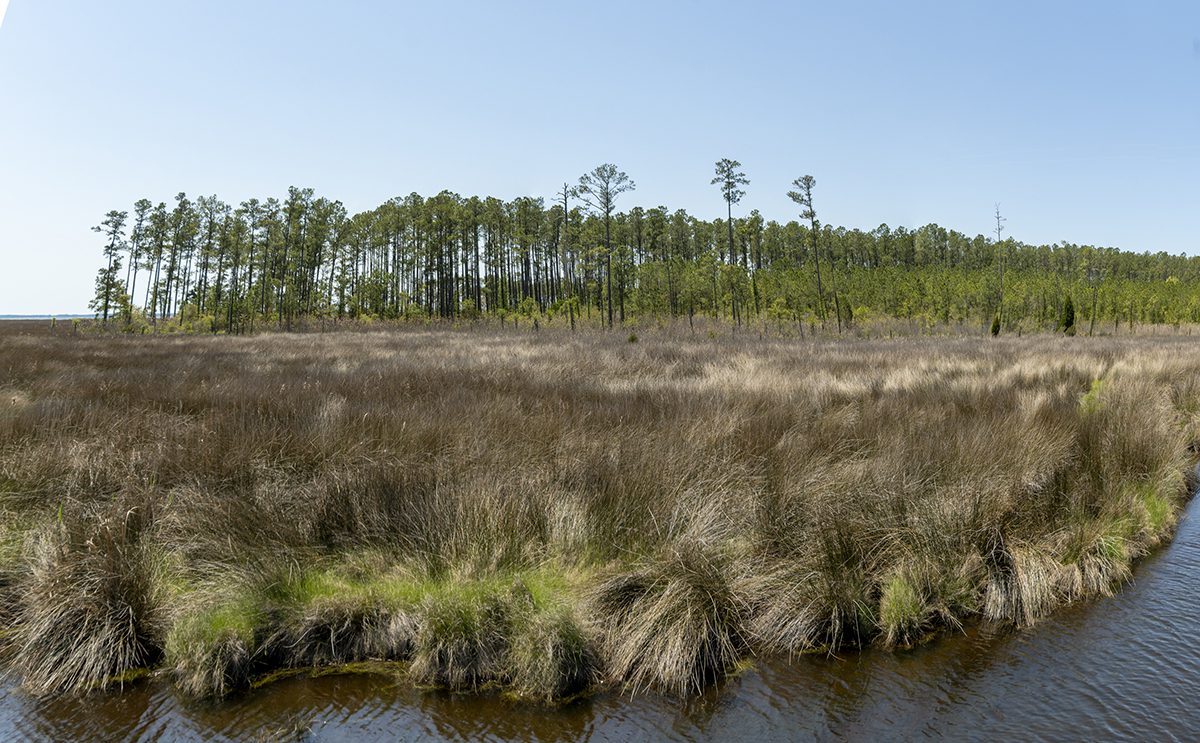
A recently closed land deal years in the making just added nearly 3,000 acres to the Gull Rock Game Lands in Hyde County.
On March 28, after almost two years of discussions and negotiations, the North Carolina Coastal Land Trust purchased 2,926 acres — 4.57 square miles — of open marsh, pond pine woodlands and oak hammocks for $4.1 million from the Glenn R. Currin and Sue A. Currin Revocable Trusts.
Supporter Spotlight
After completing the sale, Coastal Land Trust officials immediately signed the property over to the North Carolina Wildlife Resources Commission.
“We don’t want to hold those big properties that have a lot of management responsibility,” said North Carolina Coastal Land Trust Executive Director Harrison Marks. “We don’t have the equipment or the staff, but Wildlife does.”
The process was long and complicated, Marks noted, and it required considerable patience on the part of seller.
“I would say that anybody that goes with a conservation transaction has to have some interest in conservation … It is it is something that’s very difficult for many sellers,” he said.
Marks described a process that includes negotiation, surveys and research, but the most complex challenge was finding the money. He said multiple funding entities came into play, each with different requirements.
Supporter Spotlight
“So we’re getting a little bit here, a little bit there,” Marks said. “That’s what we do best, is piece together something for a very high-quality project.”
The Coastal Land Trust said earlier this month that the acquisition was made possible with support from the U.S. Fish and Wildlife Service, N.C. Land and Water Fund, Fred and Alice Stanback, and the Eddie and Jo Allison Smith Family Foundation Inc.
The addition to Gull Rock Game Land is about 15 miles west of Swan Quarter. While the new parcel does not border the current boundaries of Gull Rock, it will still be considered part of the Gull Rock Game Land complex. The site is primarily marsh and is bordered by Spencer Bay, Germantown Bay and Rose Bay.
Although much of the property is only accessible by boat, an access road leads to a clubhouse at Willow Point that looks across Pamlico Sound to the mouth of the Pamlico River. The most prominent feature, however, is the 215-acre impoundment.
The impoundment, Marks said, was particularly important to the Wildlife Resources Commission.
“That was a big reason why the Wildlife Commission was interested in being the key holders,” he said, adding that an impoundment allows for management of aquatic plants that are favorable to waterfowl and shorebirds.
At this time of the year, the impoundment has little water, with only small pools and extensive mudflats, but shorebirds fill the mudflats and wade through the shallows. The drawdown of the water is part of the commission’s management practices, explained N.C. Wildlife Commission Coastal Plain EcoRegion Supervisor Nick Shaver.
“That is really valuable habitat to a whole suite of wading birds and shorebirds. We see that in all of the impoundments that we manage that way,” Shaver said. “Once the waterfowl migrate north, we begin to pull those water levels down.”
There is considerable work yet to be done on the property. A diesel-powered generator at one time ran the pump for the impoundment, but that pump is part of an aging infrastructure that will have to be replaced.
“It is quite aged and probably at the end of its useful lifespan,” Shaver said about the pump. “We have brought a tractor and a different pump out there to try to continue to get the last bit of water off of there.”
Wildlife Resources seeks to tap money available through the 2022 Inflation Reduction Act to upgrade the impoundment dike and pumps.
“The Inflation Reduction Act had some allowances for the Wildlife Commission to combat some climate change and sea level rise effects that we’re seeing at places like Spencer Bay and Willow Point. We are applying for that money this summer,” Shaver said.
For an impoundment in a marshland like Gull Rock, the rising waters of Pamlico Sound have had dramatic effects on managing habitat.
“When that place was built, you could just open up the gates and it would drain on its own with gravity. That is no longer the case. It has to be actively pumped out,” Shaver explained.
And, Shaver added, the impoundment is not only the new addition to Gull Rock where steadily rising waters have affected management.
“In Pamlico County (impoundments) are similar in that they’re way out in the sound, with no protection around them and virtually at sea level. We’re seeing the same effects there,” he said. “It’s happened in a very short amount of time. Those impoundments were built in the 1960s.”
The impoundment area will not be available to hunters this year. A better pumping system and a higher dike are only part of the needed infrastructure work. Duck blinds in the impoundment cannot be used in their current condition.
Also, Shaver noted, when a property is added to state game lands, the commission must adopt new rules.
“It takes us a year to put a rule in place to manage these properties. One of our goals is to create not only high-quality waterfowl habitat, but (also) a high-quality waterfowl hunt on the impoundment,” he said.
Although the addition to Gull Rock represents a substantial increase in game lands available for hunters and sportsmen, for Shaver the acquisition represents more. To him, it’s a legacy for the public.
“Land acquisition is certainly one of those hallmarks in your career that you can look back on and say, ‘We were able to preserve a piece of property for the public.’ Everybody benefits, from the species and habitat to the public that gets to use it forever,” he said.








